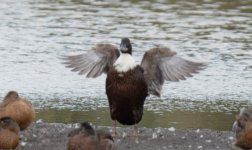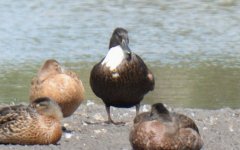Musoman
PETE - Nikon/Sony Shooter

This oddball duck was shot at Oxford's Otmoor RSPB on Saturday last and kept us guessing as to its ID
Looks like it could be an eclipse, but of what ? Its too big to be a Tufted, and so could it even be a hybrid ?
This fellow has a very dark or even black-ish beak, and pale legs
Couldnt get anywhere near it due to the hide being so far from the island it was sat on, even with the lens at full 600mm. IQ is poor due to those factors
Looks like it could be an eclipse, but of what ? Its too big to be a Tufted, and so could it even be a hybrid ?
This fellow has a very dark or even black-ish beak, and pale legs
Couldnt get anywhere near it due to the hide being so far from the island it was sat on, even with the lens at full 600mm. IQ is poor due to those factors





